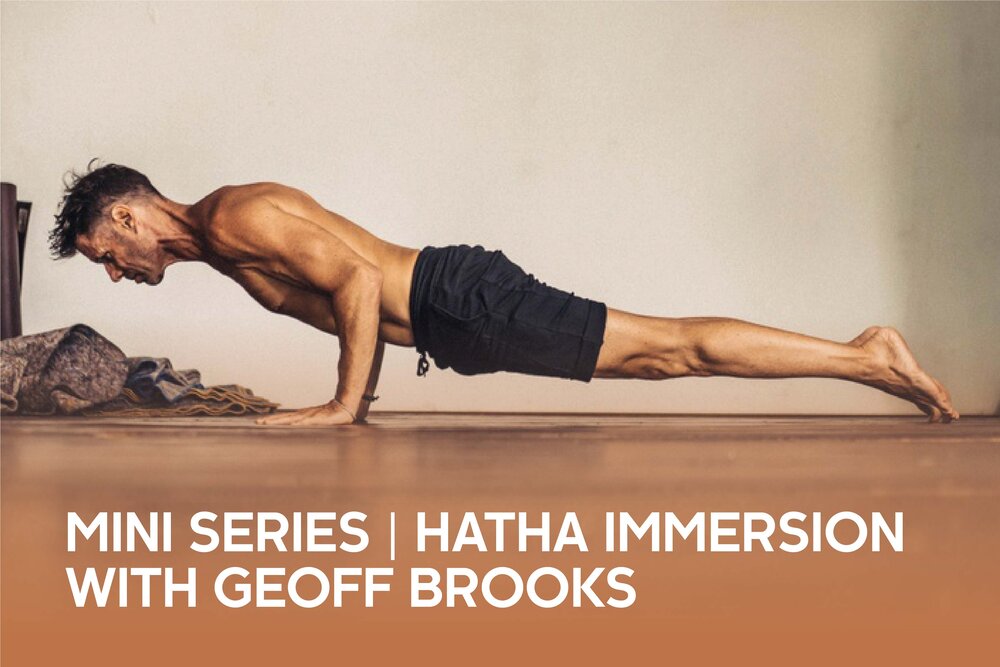
Yoga classes typically start with breath awareness and a warm up. The instructor will then begin to teach a series of poses to increase strength and flexibility. The typical class will consist of standing and floor poses. It may also include pranayama and meditation. The class ends with a relaxing led meditation. These classes can be very intense but many people find them soothing and beneficial for the mind and body. There are many yoga classes, so finding the right one is as easy as finding a nearby studio.
Whether you are new to yoga or have a long-term practice, you'll find a class to meet your needs. Classes are generally mixed ability, so you'll find both advanced and novice students. This makes it possible to create an environment where everyone can work to their own abilities and listen to themselves. You will also find it enjoyable to meet new people, and learn from their stories. There are many benefits to taking yoga classes. However, it's important to find a class with a good yoga teacher. A good instructor should not sit at the front or correct students who are having difficulties.
Even though it can be daunting, these classes are an excellent way to learn yoga. This discipline focuses on breathing and core strength. These classes focus on strength, flexibility, balance, and posture. These classes are ideal for beginners as they can be very challenging. Free classes are also available. You can do a full yoga practice in just 25 minutes if you have extra time each week.

Aerial yoga is another type of yoga class. It combines traditional and acrobatic poses with pilates. These classes include a silk hammock. Aerial training is not necessary to participate in these classes, and you don't need to know any aerial skills to take part in these activities. It is also fun to have a DJ at the class. Los Angeles offers free aerial yoga classes.
A good yoga class should provide mats with antibacterial spray and blocks for support. There are many different types of yoga classes. It is important to choose the one you like. Some classes are more restorative than others. Others are more demanding. Instructors may use Tibetan singing bowls to aid students in relaxing during class. Some also offer specialized yoga forms. There's a class for everyone. You can take a class at your local gym or in your neighborhood.
FAQ
How often should I exercise each week?
It all depends on how much time and what kind of exercise you like. A general guideline would be moderate-intensity aerobic exercise 3 - 5 days a week. You shouldn't do too much. To get the best results from your exercise, it is important to be consistent.
Which exercises are best for me?
It all depends on what type of fitness goals you have. Some people focus on endurance activities like running, cycling, and swimming. Some people enjoy lifting weights and using resistance bands. There are many options for exercise today. Select the one that best suits your needs.
What is the best way to increase muscle mass?
Two main types of exercises are required for building muscle mass. These are compound movements and isolation exercises. While compound movements focus on a single muscle, isolation exercises are focused on specific muscles.
It is important to do exercises that work all of your major muscles groups. This ensures you're always pushing yourself during your workouts.
MyFitnessPal is an app that allows you to track your activities. It allows you to log everything from calories burned to weight lifting. You can even create customized meal plans that are based on your goals.
How many calories per day should I consume?
This will vary from person-to-person. The average is 2000 - 2500 calories per day. It's important to assess your life style, gender, age and height in order to determine how much calories you need.
How fast can I transform myself?
It all starts by changing your mindset. First, you must decide to make a change.
Once you've decided to make a change, you must commit to working on your fitness for at least three months.
Then you need to find a program that fits into your lifestyle.
Realistic expectations are also important. If you are not ready to dedicate the time and effort to reach your goal, do not spend money on a gym.
Instead, exercise outdoors in your own time.
If you spend an hour a day walking around the block, you'll burn enough calories to lose 1 lb per week.
Now that you are clear about what you want to do, plan how you will organise your life around this plan.
It is important to set aside time every day for exercise before going to work. You can also take breaks throughout each day to get up and move.
Finally, you should reward yourself when you reach milestones. You could buy accessories or clothes that reflect your achievements.
What is the best way to train?
It all depends on what you're looking for. You should start with heavy weights if your goal is to build muscle mass. Then, move on to cardio. Then if you want to lose weight, go from cardio to strength training.
Cardio is a great way to lose fat if you are just looking for a quick workout. Next, add strength training.
If you are looking for muscle mass, cardio should be your last option. Cardio stimulates growth hormones and helps build muscle mass.
Also, eat before you workout. This will give your muscles more fuel, so they work harder. This will make you feel better while working out.
Do I have to exercise every single day?
No! At least 30 minutes moderate-intensity exercise five days per week is a good goal. This could be walking fast enough so you feel slightly out breath or cycling hard enough to sweat.
What Is The Best Way To Lose Weight?
It can be difficult to lose weight. Many people give up easily because they don't know what to do.
To lose that extra weight, however, there are simple steps you could take.
You must first ensure that you are consuming fewer calories than what you burn. You can gain weight by eating more calories than your body burns.
To burn all those calories, you should also start exercising. You have the option of doing jogging or walking or cycling, as well as dancing.
Third, you need to stop drinking alcohol and smoking cigarettes. These habits make it more likely that you will consume more calories than you would normally.
Fourth, reduce your intake of fatty and processed foods. You can replace them with healthier options such as fruits, vegetables, lean meats, whole grains, nuts, seeds, beans, etc.
Fifth, change your lifestyle. You may have to get up before the rest of the world to exercise.
Sixth, be disciplined and stick to your diet plan.
To burn extra calories, you can also join a gym or take an aerobics class.
You'll quickly start to notice results if you follow these simple tips.
Statistics
- Get free shipping and 25% off today. (healthline.com)
- An estimated calorie range for moderately active adult males falls between 2,200 to 2,800 calories per day, depending on age. (eatright.org)
- According to the American Heart Association, blood pressure should be checked at least once every two years, beginning at age 20. (my.clevelandclinic.org)
- Cardmembers earn 5% Back at Amazon.com with a Prime Credit Card. (amazon.com)
- By John Thompson Take a whopping 38% off a set of PowerBlock Pros. (menshealth.com)
External Links
How To
How do I lose fat by exercising?
Exercise helps you lose calories by increasing your metabolism and oxygen intake.
If you exercise with moderate intensity, you can safely lose weight.
These are the top tips for burning fat while you exercise.
-
Cardio exercises include swimming, running or cycling.
-
Exercise for 30 minutes three times per week.
-
You can add strength training into your exercise routine if you're looking to lose even more weight.
-
Avoid intense workouts. You can build muscle and not break down muscle tissue.
-
Drink plenty of water during exercise. Water flushes out toxins, and keeps your body properly hydrated.
-
After working out, make sure to drink low-fat proteins shakes. Protein shakes repair muscles and increase energy.
-
You can eat smaller meals throughout the day so that you don't feel hungry in between meals.
-
Don't skip breakfast! Skipping breakfast can leave you feeling tired and sluggish.
-
Take care to your mental well-being. Stressful situations can slow your metabolism.
-
Keep a positive attitude. Studies show that people who believe they are overweight gain more weight then those who think they are attractive.
-
Get enough sleep. A lack of sleep makes it difficult to lose fat.
-
Keep active. Make sure you get up and move every hour.
-
Maintain a healthy diet. Healthy eating will keep you fuller and more satisfied for longer.
-
Find ways to relax. Your body won't release stress hormones that cause muscle tissue destruction if you have a tense mind.
A balanced diet contains all necessary nutrients for growth and development.
Six small meals per day is better than three large meals. This gives your body the time it needs to process what you've eat.
To maintain strong bones, you need to consume 500 mg of calcium each day. Calcium is found in dairy products like yogurt, fortified milk beverages, orange juices, cereals and bread.
Calcium is found in green leafy vegetables, beans, tofu, seeds, nuts, and cheese.
Vitamin D is necessary for the body to absorb calcium. Vitamin D is found in eggs yolk, fatty fish and fortified foods.
Vitamin E plays an important role in skin health. It's found in vegetable oils, wheat germ oil, peanuts, almonds, sunflower seeds, and corn.
Your body needs zinc for normal immunity function and wound healing. Zinc is found in seafood, oysters legumes meats, whole grains, whole grains and meats.
Zinc deficiency can cause fatigue and loss of appetite. It can also lead to depression and impaired immunity.
Too much sugar leads to insulin resistance. This results in higher blood glucose levels. Insulin resistance leads to weight gain.
Insulin resistance occurs when the bloodstream is full of free radicals. Free radicals are molecules that have unpaired electrons, which can cause damage to cell membranes or other parts of your body.
Free radicals come mainly from food additives, pesticides, herbicides, preservatives, smoking, air pollution, radiation, chemicals in cosmetics, lotions, and household cleaning supplies.
Free radical damage can cause cancer, heart disease and diabetes, as well as arthritis, asthma, and other diseases.
A well-balanced diet rich in antioxidants is the best way for you to avoid free radical damage. Antioxidants protect against oxidative damage.
Vitamin C is found in citrus fruits and beta carotene is found in carrots.
Selenium, copper as well as manganese and zinc are some other antioxidant nutrients.
Selenium protects cells from free radical damage. Selenium can be found in Brazil nuts and liver, kidneys, liver, kidneys, shrimp, cod, turkey and lamb as well as chicken.
Copper protects the brain, eyes, lungs, and red blood cells. Copper is found in shellfish, poultry, meat, and organ meats.
Manganese plays an important role in bone structure. Manganese may be found in brown rice or spinach, bananas and prunes as well raisins, oatmeal and lentils.
Zinc is required for normal growth, reproduction and wound healing. Zn can also be found in white fish, lean cuts of meat, poultry, and eggs.